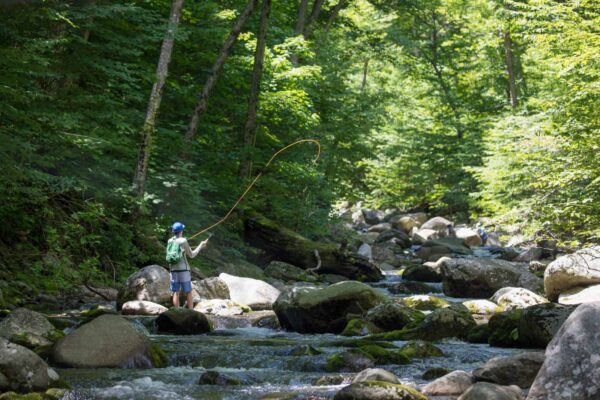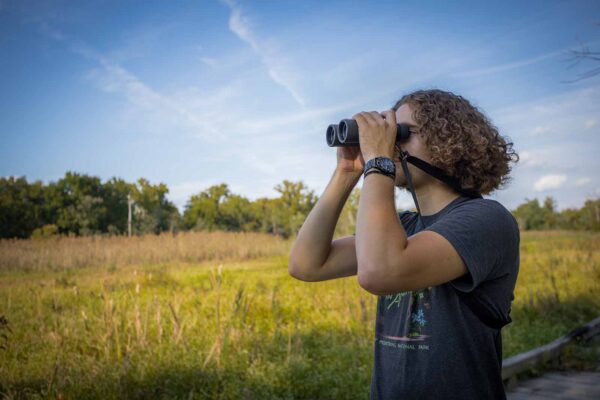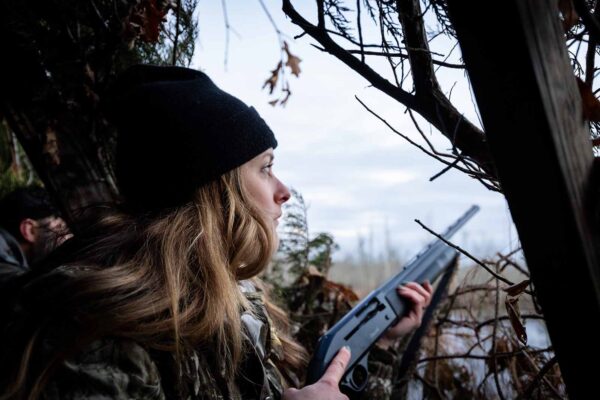Best Practices to Ensure a Safe and Enjoyable Experience for Everyone!
Safety Tips
Safety Tips for Everyone Visiting Department of Wildlife Resources Property
- Familiarize yourself with the area before visiting. Consider printing a map in case cellular connectivity is unreliable.
- Check weather reports before visiting.
- Tell someone where you will be and when you will return. Be sure to check in at the end of your visit.
- Dress properly and be prepared for the worst possible conditions.
- Carry a spare set of dry clothing. Use layering techniques to prevent moisture while retaining body warmth. Always bring rain gear.
- Carry a first aid kit.
- Report observed violations of the law to a conservation agent or local sheriff. To report a wildlife violation to our Wildlife Crime Line, call 1-800-237-5712, or email WildCrime@dwr.virginia.gov.
Safety Tips for Visiting Department of Wildlife Resources Property During Hunting Season
- Wear bright clothing. Blaze Orange or Blaze Pink is recommended during all hunting seasons.
- Weekend mornings and evenings are the most popular times to hunt. Consider avoiding these times in areas with an open hunting season.
- Deer hunting pressure is highest on the weekends and in the morning and late afternoons in the fall and early winter.
- Waterfowl and Fall Turkey hunting pressure is highest on weekend mornings and evenings in the fall and early winter.
- Spring turkey hunting pressure is highest on weekend mornings in April.
- If accompanied by a dog, the dog should also wear blaze or a very visible color on a vest, leash, coat and/or bandana. Dogs must be leashed at all times regardless of season.
- Stay on the administrative roads. If you must leave the road and you hear shooting, raise your voice and let hunters know that you are in the vicinity.
- Be courteous. Once a hunter is aware of your presence, don’t make unnecessary noise to disturb wildlife. Avoid confrontations.
- Know when hunting seasons are. Learn about where and when hunting is taking place as you choose where to hike by consulting the annual hunting and trapping digest.
- Know your own comfort level. If hunting makes you uneasy, choose a hike in a location where hunting is not allowed or during the off-season.
Safety Tips for Hunters Visiting Department of Wildlife Resources Property
- Know and obey all wildlife laws and gun safety.
- Know the boundaries of the property and the boundaries of the hunting area, when applicable.
- Make sure your equipment is in good working condition and your firearm is properly sighted in before and after each outing and maintain it properly. Familiarize yourself with its operation before using it in the field.
- Be alert when hunting. Other recreationists are welcome to use DWR property regardless of hunting season.
- Know the effective range of your gun. Clearly identify your target and what lies beyond it before shooting.
- Never shoot at sound or movement. Assume it is another hunter or recreationist until you can clearly see the animal.
- If you are involved in a hunting incident, render assistance, identify yourself, call 911 and report the incident to DWR Law Enforcement at 1-800-237-5712.
Ten Essentials
Here is a collection of first aid and emergency items that can help you in the event of minor injuries, sudden weather changes, or unexpected delays. The “Ten Essentials” are only the basic items you should have with you. You may need additional items depending on the activity in which you participate (e.g. life jacket, bug spray, personal locator beacon).
Navigation (map, compass, and GPS system)
Know how to use a topographical or relief map as well as your compass or GPS unit before going out.
Sun Protection (sunglasses, sunscreen, and hat)
Consider using sunglasses, sunscreen, and hats. Sun-protection clothing such as pants and long sleeve shirts can also help minimize your exposure to the sun.
Insulation (jacket, hat, gloves, rain shell, and thermal underwear )
Be prepared for sudden changes in weather conditions. Pack an extra layer of clothing that reflects the most extreme conditions you could encounter.
Illumination (flashlight, lanterns, and headlamp)
Lighting is indispensable in the outdoors where no conventional light sources can be found. Items include flashlights, lanterns, and headlamps. Headlamps are the preferred light source because they are hands-free. Be sure to pack extra batteries.
First Aid Supplies (first aid kit)
Be prepared for emergencies by packing first-aid supplies with you. Start with a pre-made kit and modify it to fit your trip and your medical needs. Check the expiration date on all items and replace them as needed. Consider including an emergency guide in case you are faced with an unfamiliar medical emergency.
Fire (matches, lighter, and fire starters )
Fire can be an emergency signal and a heat source for cooking and staying warm. Pack matches (preferably waterproof) and fire starters – items that catch fire quickly and sustain a flame (e.g. lighter). Know the fire use regulations on the property you are visiting before heading out.
Repair Kit & Tools (duct tape, knife, screwdriver, and scissors )
Carry a basic repair kit with you to help repair equipment. The kit should include items such as duct tape, a knife, and scissors. Consider packing a multi-tool, a compact version of many tools that can include a knife, screwdriver, can opener, etc. Be sure to bring any tools specific to your trip and your activity.
Nutrition (food)
Pack no-cook items that have good nutritional value in order to keep your energy high. Salty and easy to digest snacks (e.g. trail mix, nuts, and granola bars) work well for outdoor activities.
Hydration (water and water treatment supplies)
Physical activity increases your risk of dehydration (loss of water and salts from the body), which can lead to negative health consequences. If you’re active outdoors, you should drink water often and before you feel thirsty. Prepare your water before you need it and do not allow yourself to become dehydrated.
Emergency Shelter (tent, space blanket, tarp, and bivy)
Shelter is one of the most important elements during an emergency survival situation. It can protect you from severe weather conditions and exposure to the elements. A tent, tarp, bivy sack, or emergency space blanket are all lightweight options for emergency shelter.

With over 1,000 wild places to explore, Explore the Wild is your online tool to find the best public lands in Virginia to hunt, fish, boat, paddle, view wildlife, hike, and go primitive camping!




